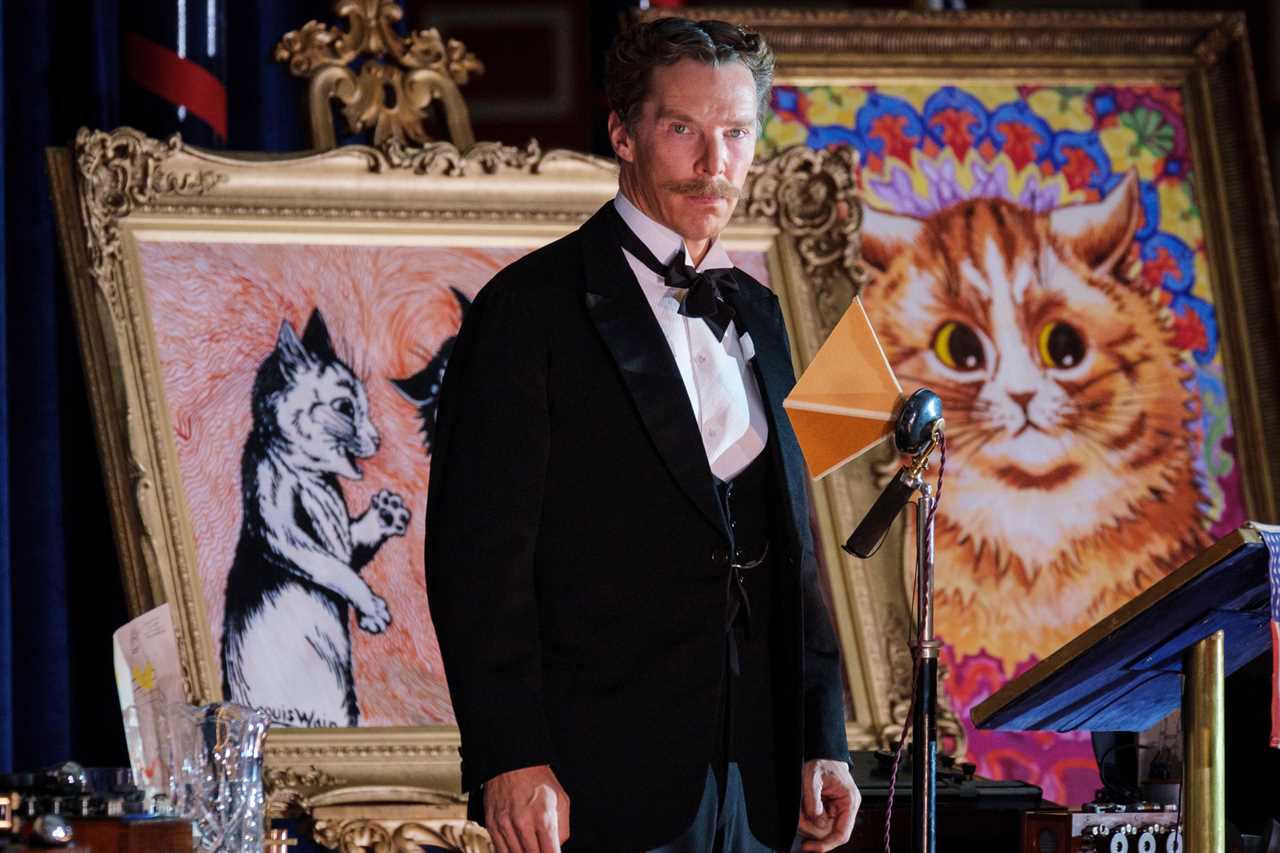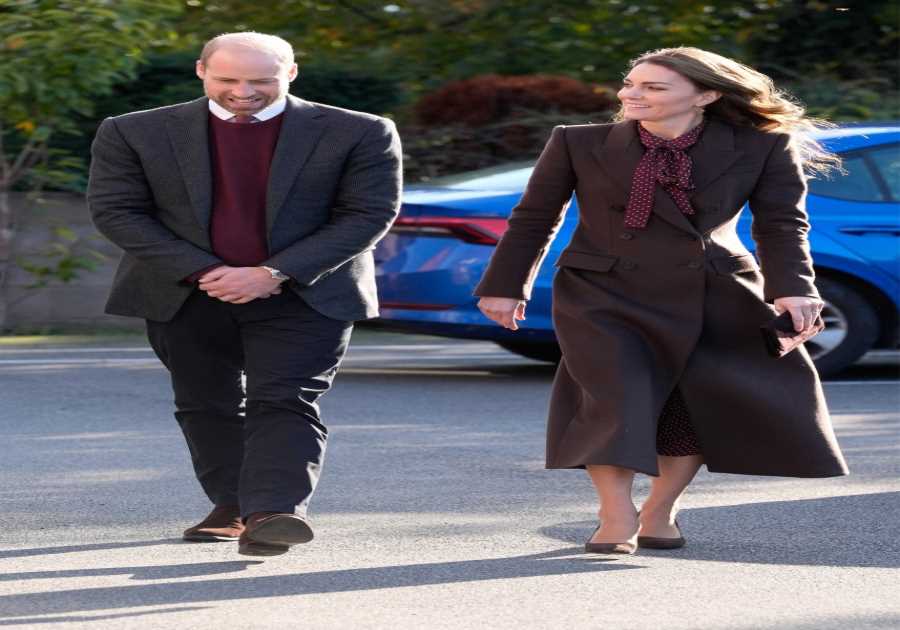HE doesn’t know it – or care – but that moggie lying on the windowsill soaking up the sun may not have been there without the help of a Victorian illustrator.
There are 12million domestic cats in Britain today but before Louis Wain’s drawings gave them playful human characteristics the nation wouldn’t give them house room.
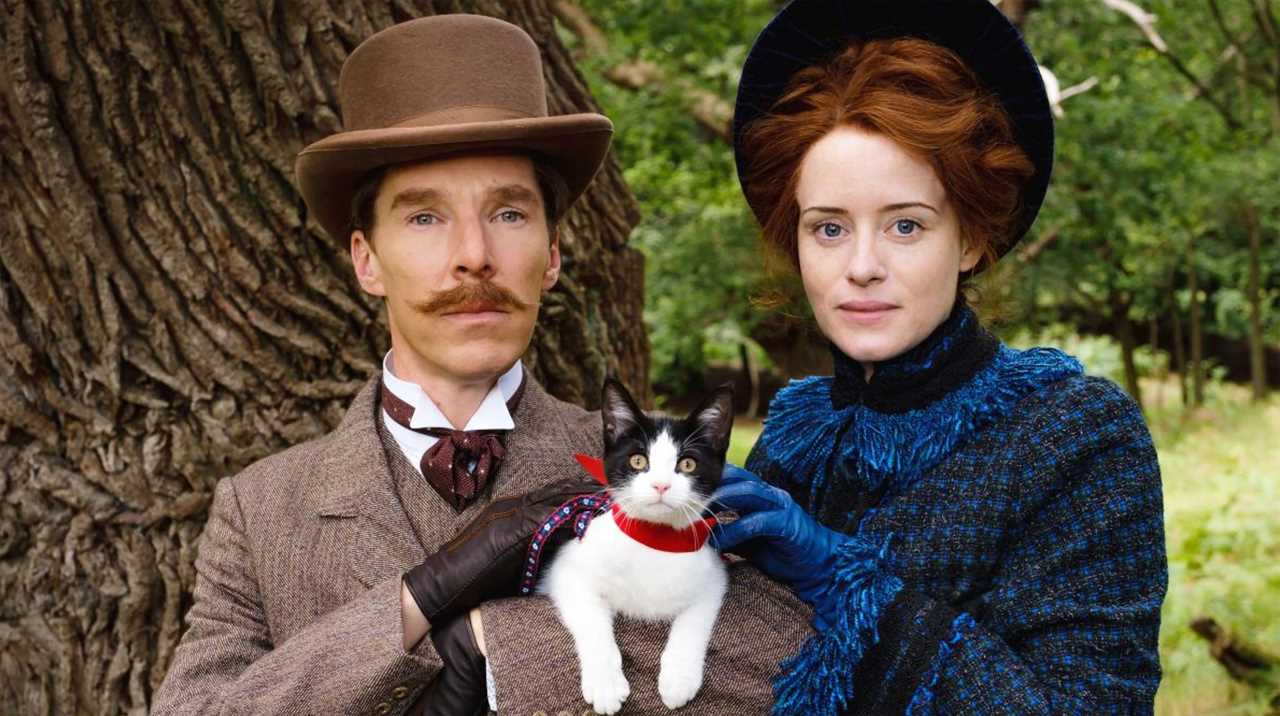

In new film The Electrical Life Of Louis Wain, Benedict Cumberbatch plays the title character, the talented but until recently near-forgotten artist who brought the animals to life and planted in the public’s mind the idea of owning a pet puss.
The A-list actor said of working with the felines on screen: “You can fall in love with them and treat them as a little baby. I love cats, actually. I think they’re extraordinary.”
Wain’s paintings changed our perception of cats for ever, transforming them after he described his own beloved pet as “a household god”.
Also starring Claire Foy as his wife, Emily Richardson, and Nick Cave as author H.G. Wells, the film tells the true and often tragic story of Wain’s life.
From late Victorian times, through the Edwardian era and up to the 1930s, the film — narrated by Olivia Colman — covers his huge success, bereavement, fame and subsequent descent into mental illness and poverty.
Benedict said of his character’s paintings: “A lot of the audience will feel, as I did, as if they’ve seen his pictures before but they couldn’t tell you where, or who it was that drew them.”
Long before Garfield, Felix or The Cat In The Hat, it was Wain’s brightly coloured, big-eyed cat portraits that captured the imagination.
His drawings, depicting lovable felines having fun doing human activities such as playing cricket or having tea parties were a turn-of-the-century smash hit.
Edwardian audiences lapped them up and suddenly began to think of cats as cute animals they could keep and love.
Cats in Victorian and early Edwardian times were valued purely to get rid of rats and mice. They lived outside, feral, and their role certainly never warranted indulgent strokes, fireside snoozes or saucers of milk.
In fact, pampering them would have been considered distinctly odd. But forward-thinking Wain believed keeping a kitty as a friend was good for their owner’s health.
The artist declared he wanted “to wipe out, once and for all, the contempt in which the cat has been held in this country”.
Talented painter
And that is what he did. Slowly, the Edwardians, charmed by his fun sketches of playful pussycats and endearing toms and tabbies, began to reconsider them as the perfect tame animals.
It was the start of a journey that would ultimately rocket them to becoming one of the UK’s most popular and beloved companions.
Born in 1860, Wain — an only son with five siblings — was always a talented painter and a fan of cats.
After his father died in 1860, it was marriage to the family governess, Emily Richardson, that really put his love for the animals centre stage.
Wain’s mother and sisters had disapproved of their nuptials and refused to attend the wedding.
But Benedict said of the union: “He found someone who understood him, who validated and encouraged him and whose love sustained him.
‘He was losing his mind in a world that didn’t understand’
“We all want to be loved and understood in that way.”
Wain was already a talented and highly regarded artist, whose engravings were used in newspapers before they could reproduce photographs.
In 1883, 23-year-old Wain and new wife Emily took in Peter, a stray black and white kitten they found meowing outside their house.
Then tragically, only months after the young couple had married, Emily discovered she had breast cancer. It was little Peter who kept them going.
The couple doted on their pet and trained him to wear spectacles, play dead and hold a postcard in his paws. Wain started sketching their puss, for whom he first used his phrase “the household god”.
From these doodles writer H.G. Wells said: “He had made the cat his own. He invented a cat style, a cat society, a whole cat world. English cats that do not look and live like Louis Wain cats are ashamed of themselves.”
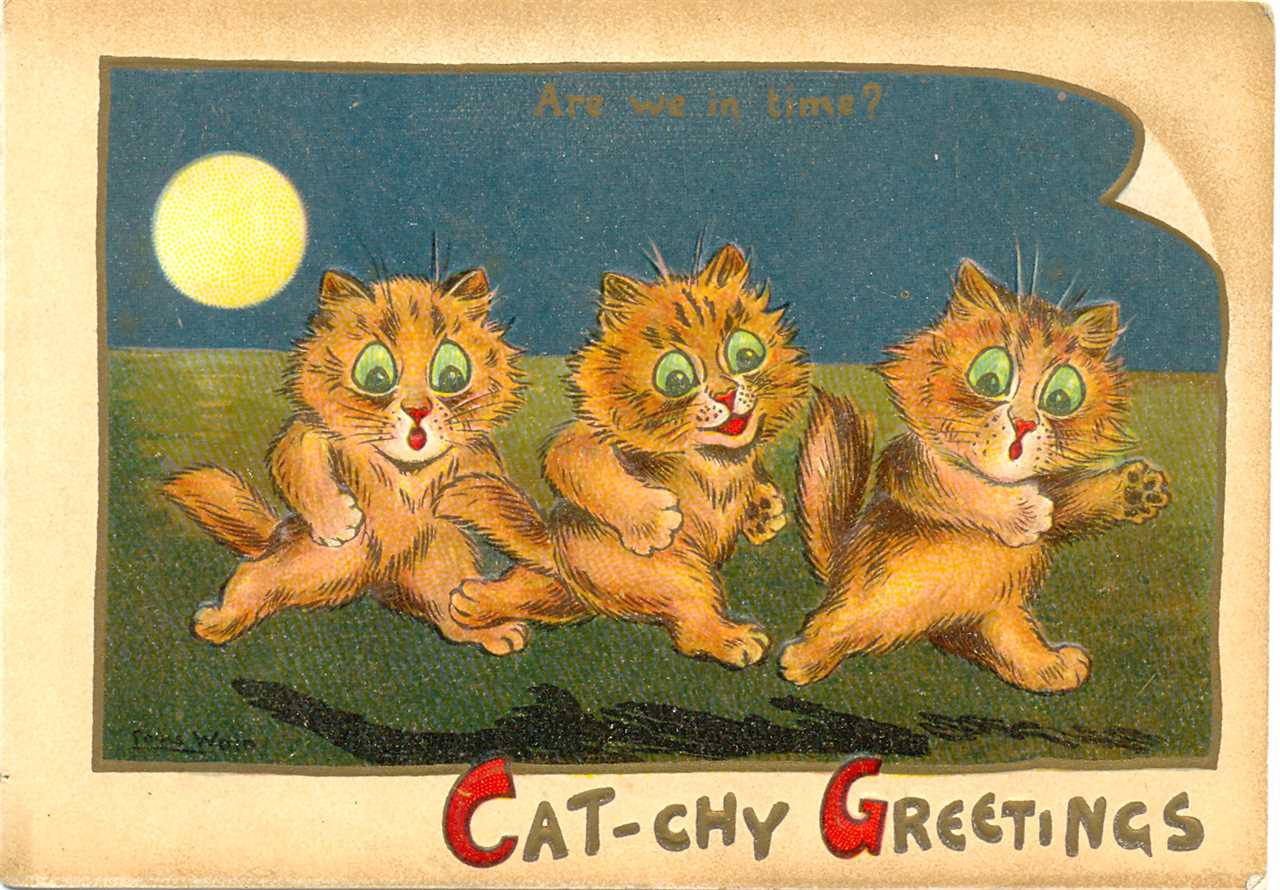
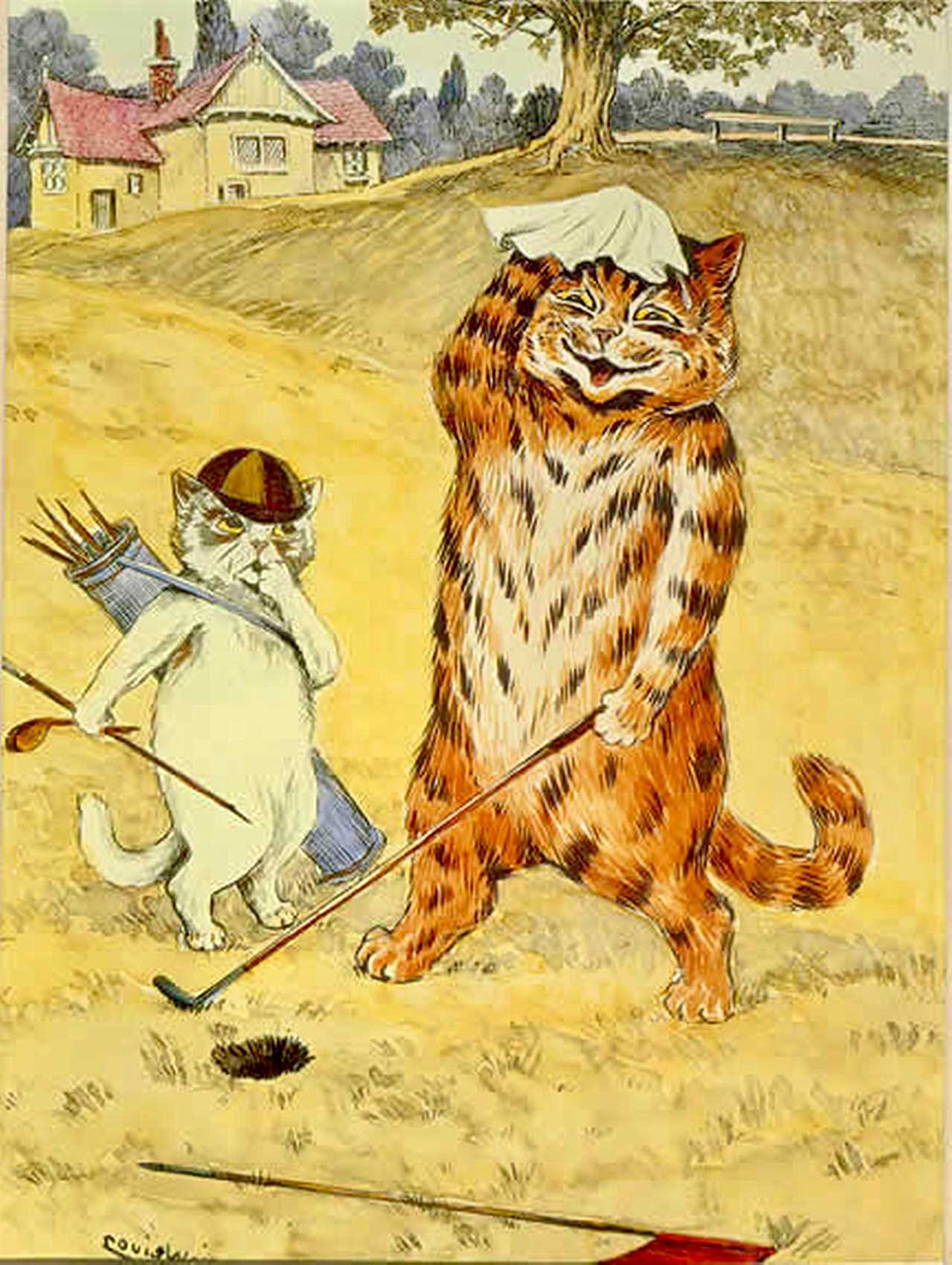
In Wain’s cartoon cat-universe felines were depicted living in society and doing exactly what humans did.
They had personalities, wore the fashions of the time, went to dances, rode bikes and swam in the sea.
These were mostly created as Wain sat in public places and furtively sketched the people around him,
Very often the drawings were there to poke fun at the way people behaved. He also did a few political satirical cartoons — Winston Churchill as a cat, for instance — but it was all very gentle.
Championed by Emily, Wain’s big break came in 1886 when “A Kittens’ Christmas Party”, a large feature of 150 of his humanoid cats and which took 11 days to create, appeared in a well-known London publication.
It was an instant hit with readers and Wain’s fame and reputation quickly grew, with the public clamouring for more of his witty pictures.
Wain’s cats went to dances, wore clothes, rode bikes
Tragically, just days afterwards, Emily died, leaving Wain a widower at just 26, but he continued to use their adored cat Peter as his muse.
From 1880 until the outbreak of World War One, “Louis Wain cats” appeared everywhere — on prints, in books and magazines, and on tins and postcards.
He became the president of the National Cat Club and used his platform to champion their wellbeing as families began adopting them as pets. He also edited the journal Our Cats.
Producing up to 600 prints and his best-selling Louis Wain’s Annuals — “a publication full of his cat drawings, poems, and stories” — his career was now the cat’s whiskers.
Yet behind the paintbrush the artist was struggling with his own life and he had begun to lose his grip on his empire, and his faculties.
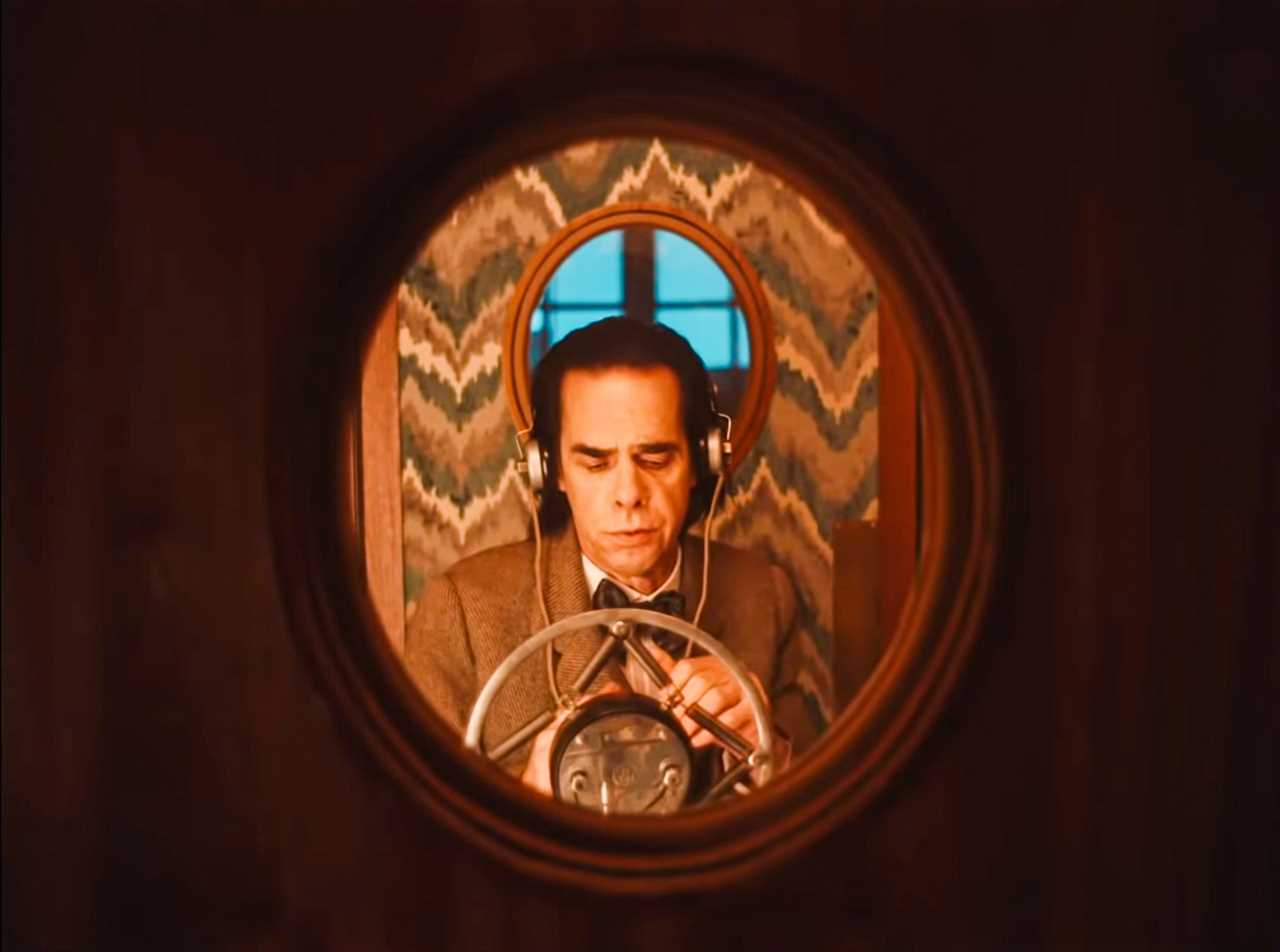
As the main breadwinner for his family since his father’s death, left to support his mother and siblings, Wain found fame but not fortune from his work.
Lacking business savvy, he failed to copyright his images — meaning anyone could, and did, reproduce them without paying him royalties.
Instead of riches, Wain found himself mired in debt. The death of his adored cat Peter aged 15 in 1898 caused a further decline.
Long seen as one of life’s eccentrics, Wain suffered with delusions and obsessive theories — including beliefs that cat fur generated electricity, and that the animals habitually faced north due to magnetic forces.
Benedict said: “He felt this thing all his life about electricity. The real electricity is love. That’s the flow, that’s the course that runs through his entire life.”
Following World War One, Wain began showing signs of serious mental disorder and, in June 1924 and penniless, he was certified insane and committed to the paupers’ ward of a psychiatric hospital in Surrey.
‘Psychedelic’ cat images
Benedict added: “Louis was losing his mind in a world that didn’t understand him, with no support other than a paupers’ asylum to be locked away in.”
He was discovered by a journalist a year later and admirers of his work were shocked to discover the fate of the famous cat artist.
With money raised through an early version of a crowdfunding campaign he was later transferred to posher Bethlem Hospital, in Kent.
Donors included leading actors and authors of the era, and Prime Minister Ramsay MacDonald. Wain remained in secure hospitals, daubing his critically lauded later works the “psychedelic” cat images, until his death in July 1939.
Yet as actress Claire emphasises: “Wain’s struggle with mental health takes over his life but does not define him as a person.”
- The Electrical Life Of Louis Wain (PG) opens in cinemas on January 1.
